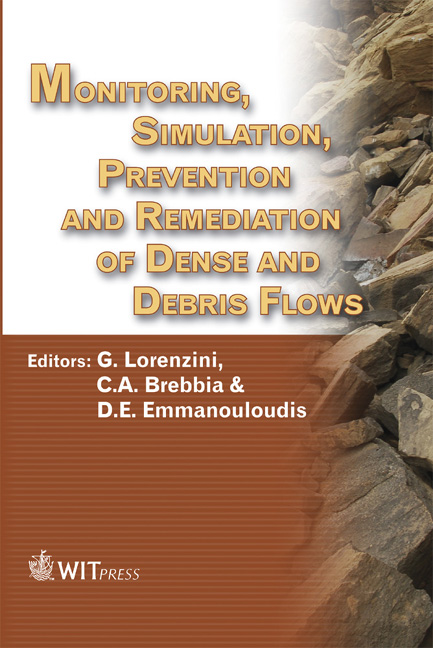A Procedure For The Evaluation Of Debris Flow Stratification
Price
Free (open access)
Transaction
Volume
90
Pages
8
Published
2006
Size
402 kb
Paper DOI
10.2495/DEB060081
Copyright
WIT Press
Author(s)
E. Larcan, S. Mambretti & M. Pulecchi
Abstract
An experimental campaign (almost 80 tests in a rectangular flume closed by a sluice gate, setting the bed slope at 15° and 20° and adjusting the initial solid volume fraction from 0.1 to 0.5) was performed at the laboratory of the Politecnico di Milano. The aim of the tests was to assess the propagation of a dam-break wave of a hyperconcentrated mixture of water and granular material, and they showed that a stratification in the flow sometimes occurs. Indeed, depending on the bed slope and on the solid volume fraction in the mixture, in the upper part of the debris flow a layer of clear water may be present on top of an homogeneous layer containing both solid and fluid phases. Hence, a correct mathematical modelling of the phenomenon should account for this key feature and treat the mixture as a full two-phase system. Required for this purpose is a criterion for evaluating the saturation degree of the mixture. A dimensional analysis determined that the solid volume fraction and a Froude number are the fundamental parameters governing the dynamics of the level of the surface dividing clear water and fully saturated mixture. The paper also presents the preliminary results of an analysis using an edge detection algorithm in order to obtain the free surface depth and the depth of the fully saturated layer. Keywords: mature and immature debris flow, two phases models. 1 Introduction A number of models to describe debris flow propagation assume that the solid/liquid mixture is a one-phase fluid, of which it is necessary to define the rehologic equation. A more realistic description of the phenomenon would require consideration of the mixture as a two-phase fluid. In the literature, quasi two-phase models are
Keywords
mature and immature debris flow, two phases models.





